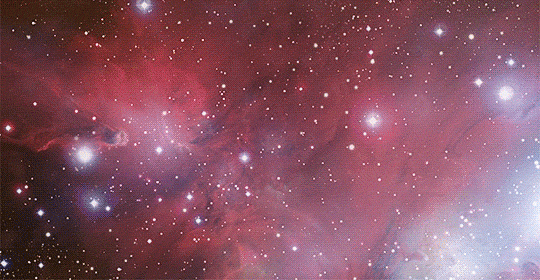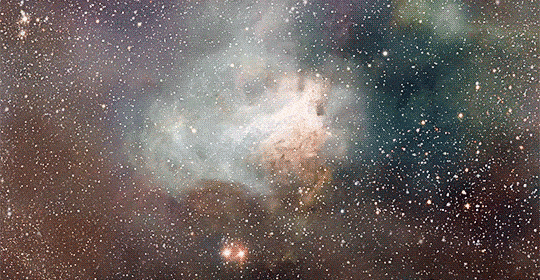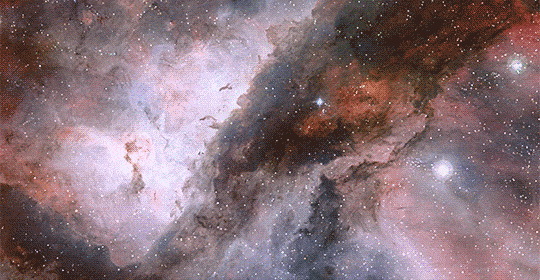Buzz Aldrins Self-portrait During Gemini 12 With The Earth Reflecting Off His Visor, 12 November 1966

Buzz Aldrins self-portrait during Gemini 12 with the Earth reflecting off his visor, 12 November 1966
js
More Posts from Lanas-own-blog and Others

Pickering’s Triangle







Fill your void
The One-Year Mission
First off, what is the One-Year Crew? Obviously, they’re doing something for a year, but what, and why?
Two crew members on the International Space Station have just met the halfway point of their year in space. NASA Astronaut Scott Kelly and Russian Cosmonaut Mikhail Kornienko are living in space for 342 days and will help us better understand the effects of microgravity on the human body.
Why 342 days and not 365? Thought you might ask. Due to crew rotation schedules, which involve training timelines and dictate when launches and landings occur, the mission was confined to 342 days. Plenty of time to conduct great research though!

The studies performed throughout their stay will yield beneficial knowledge on the medical, psychological and biomedical challenges faced by astronauts during long-duration spaceflight.
The weightlessness of the space environment has various effects on the human body, including: Fluid shifts that cause changes in vision, rapid bone loss, disturbances to sensorimotor ability, weakened muscles and more.
The goal of the One-Year Mission is to understand and minimize these effects on humans while in space.
The Twins Study

A unique investigation that is being conducted during this year in space is the Twins Study. NASA Astronaut Scott Kelly’s twin brother Mark Kelly will spend the year on Earth while Scott is in space. Since their genetic makeup is as close to identical as we can get, this allows a unique research perspective. We can now compare all of the results from Scott Kelly in space to his brother Mark on Earth.
But why are we studying all of this? If we want to move forward with our journey to Mars and travel into deep space, astronauts will need to live in microgravity for long periods of time. In order to mitigate the effects of long duration spaceflight on the human body, we need to understand the causes. The One-Year mission hopes to find these answers.
Halfway Point

Today, September 15 marks the halfway point of their year in space, and they now enter the final stretch of their mission.
Here are a few fun tidbits on human spaceflight to put things in perspective:
1) Scott Kelly has logged 180 days in space on his three previous flights, two of which were Space Shuttle missions.
2) The American astronaut with the most cumulative time in space is Mkie Fincke, with 382 days in space on three flights. Kelly will surpass this record for most cumulative time in space by a U.S. astronaut on October 16.
3) Kelly will pass Mike Lopez-Alegria’s mark for most time on a single spaceflight (215 days) on October 29.
4) By the end of this one-year mission, Kelly will have traveled for 342 days, made 5,472 orbits and traveled 141.7 million miles in a single mission.
Have you seen the amazing images that Astronaut Scott Kelly has shared during the first half of his year in space? Check out this collection, and also follow him on social media to see what he posts for the duration of his #YearInSpace: Facebook, Twitter, Instagram.
Make sure to follow us on Tumblr for your regular dose of space: http://nasa.tumblr.com
The NASA “Worm” Logo
Just like many organizations, the style and logos can change over time. You are probably most familiar with our “meatball” logo. No, unfortunately this does not refer to the delicious food. This logo (below) is our most popular symbol, and dates back to 1959.

But, we’ve also had other insignia that represented our organization throughout the years.
The “worm” logo (below) was used by the agency from 1975 until 1992. The organization wanted to create a more “modern” logo, which resulted in the unique type style of the “worm” logo.

Even though this logo was retired in 1992, the Graphics Standards Manual is still available online HERE.
You can also read up about the emblems, logos and insignia used by NASA throughout the years in a new e-Book available for free HERE.
Make sure to follow us on Tumblr for your regular dose of space:http://nasa.tumblr.com


Islamic Art
Most everyone is familiar with geometry and patterns. The above image by Richard Henry is included here to give some mathematical frame of reference. The artistic emphasis of these ideas gained prominence due to certain religious rules in Islamic religious texts forbidding the portrayal of human forms in worship. Additionally, the advanced mathematical discoveries in the middle east brought about some wonder toward the patterns of these ideas. The underlying message in such geometries, within the Islamic context, is the infinite and natural power of God. It is important to note that ideas like zero, our decimal counting system, and algebra originated from India and the middle east. Arabic calligraphy is also similarly celebrated and made the subject of many past and current Islamic art.

NGC 5189.
Credit: NASA, ESA and The Hubble Heritage Team (STScI/AURA)




Flying Across The Universe Part 2 (From Top to Bottom: Cone Nebula, Omega Nebula, Carina Nebula, and Lupus 3)
(Part 1)
Credit: ESO.org


Merging clusters in 30 Doradus.
Credit: NASA, ESA and E Sabbi
-
 saphicspacesociety19 reblogged this · 1 year ago
saphicspacesociety19 reblogged this · 1 year ago -
 genitodiablo liked this · 1 year ago
genitodiablo liked this · 1 year ago -
 fionnaskyborn liked this · 3 years ago
fionnaskyborn liked this · 3 years ago -
 corrosive-dude reblogged this · 4 years ago
corrosive-dude reblogged this · 4 years ago -
 frappyoung liked this · 5 years ago
frappyoung liked this · 5 years ago -
 weaving-knightmares reblogged this · 5 years ago
weaving-knightmares reblogged this · 5 years ago -
 anincandescentglow-25 reblogged this · 5 years ago
anincandescentglow-25 reblogged this · 5 years ago -
 mogrbe liked this · 5 years ago
mogrbe liked this · 5 years ago -
 bakugxre liked this · 6 years ago
bakugxre liked this · 6 years ago -
 16fahri liked this · 6 years ago
16fahri liked this · 6 years ago -
 lenjaminmacbuttons liked this · 6 years ago
lenjaminmacbuttons liked this · 6 years ago -
 tyyiyi liked this · 6 years ago
tyyiyi liked this · 6 years ago -
 anotherbotchedjump reblogged this · 6 years ago
anotherbotchedjump reblogged this · 6 years ago -
 ludmila199 liked this · 6 years ago
ludmila199 liked this · 6 years ago -
 midi8 liked this · 6 years ago
midi8 liked this · 6 years ago -
 radiumkind liked this · 6 years ago
radiumkind liked this · 6 years ago -
 andycandyh liked this · 6 years ago
andycandyh liked this · 6 years ago -
 sm0ke--trails reblogged this · 6 years ago
sm0ke--trails reblogged this · 6 years ago -
 sm0ke--trails liked this · 6 years ago
sm0ke--trails liked this · 6 years ago -
 karravi reblogged this · 6 years ago
karravi reblogged this · 6 years ago -
 bibidebabideboo reblogged this · 6 years ago
bibidebabideboo reblogged this · 6 years ago -
 burningsobright liked this · 6 years ago
burningsobright liked this · 6 years ago -
 ghostowlattic reblogged this · 6 years ago
ghostowlattic reblogged this · 6 years ago -
 ytelovski liked this · 6 years ago
ytelovski liked this · 6 years ago -
 entropikuro liked this · 6 years ago
entropikuro liked this · 6 years ago -
 dhruvthestar26 liked this · 6 years ago
dhruvthestar26 liked this · 6 years ago -
 innorthernitaly1983 reblogged this · 6 years ago
innorthernitaly1983 reblogged this · 6 years ago -
 vampirejuno liked this · 6 years ago
vampirejuno liked this · 6 years ago -
 caesarino-zeppeli liked this · 6 years ago
caesarino-zeppeli liked this · 6 years ago -
 iamdefinitelynotanalien liked this · 6 years ago
iamdefinitelynotanalien liked this · 6 years ago -
 vodka-and-fedoras reblogged this · 6 years ago
vodka-and-fedoras reblogged this · 6 years ago -
 elizabethtaylor9 liked this · 6 years ago
elizabethtaylor9 liked this · 6 years ago -
 drawmeflying liked this · 6 years ago
drawmeflying liked this · 6 years ago -
 unseenlabratory reblogged this · 6 years ago
unseenlabratory reblogged this · 6 years ago -
 maxmnstrgren reblogged this · 6 years ago
maxmnstrgren reblogged this · 6 years ago -
 yoonbloo-blog liked this · 6 years ago
yoonbloo-blog liked this · 6 years ago -
 marvelousnoob96-blog reblogged this · 6 years ago
marvelousnoob96-blog reblogged this · 6 years ago -
 marvelousnoob96-blog liked this · 6 years ago
marvelousnoob96-blog liked this · 6 years ago
I've had lots of blogs in the past, but this one I'm actualy excited to share with people.
68 posts